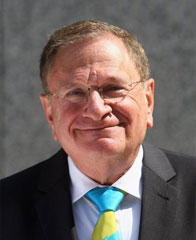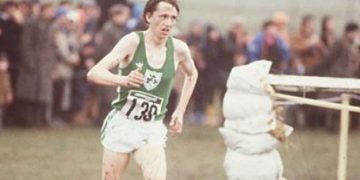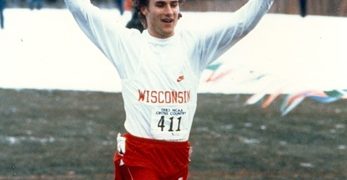RelatedPosts
By ELLIOTT DENMAN
USA Track and Field, the national governing body for the flagship sport of the Olympic Games, stands at a huge crossroad.
On the one hand, it’s registering success after success on the financial front, recruiting an
array of new sponsors, seeing its bottom line brighten, and thus promising major increases in
support for the athletes and events that are its lifeblood.
All this was the gist of USATF CEO Max Siegel’s state-of-the-federation address and
president/Board of Directors Chairman Stephanie Hightower’s talk that opened USATF’s Annual
Meeting on a Tuesday afternoon last week in Anaheim, California.
And all that good news was appropriately applauded by the delegates who’d assembled at the
Anaheim Hilton – across the street from Disneyland – to map plans, events and personnel
assignments for the events ahead in 2015 and beyond.
But by Friday morning, at the Annual Meeting’s concluding assemblage, a lot more was in the
air and much of it centered around USATF’s future direction.
That air had turned very-very cloudy.
After all the decisions that had been made in previous days – most gaining general support of
the membership – were out of the way, that Friday session focused on one issue.
And this was it:
Who was USATF’s choice to represent it on the all-important, and global decision-making International Association of Athletics Federation’s Council?
Who’d it be?
Robert (Bob) Hersh, who’d been a Council member for 16years and had risen to the
vitally influential position of vice president.
Or…
Stephanie Hightower, USATF’s own President and Board Chairman?
It should have been done in a straightforward way – determine just who had the right to vote, in a system where each local USATF’s association athlete-registration figures determined its delegate total. It should have been a quick-and-easy process, enabling the many delegates who’d booked morning flights home to make their connections.
But it wasn’t quick and it wasn’t easy.
After a series of procedural processes were addressed – trying to clarify exactly what the final delegate vote would determine – paper ballots were collected and counted.
Finally, USATF officer Edward Koch – no relation to the late “How’m I doing?” NYC Mayor Ed Koch – stepped to the dais to declare that the winner was Robert Hersh.
Koch gave no numbers, just the verdict.
So it surely came as a humongous shock to all those delegates on their arrival home to learn that the actual numbers constituted a nearly five-and-a-half to one landslide triumph for Hersh.
But the real shock came soon after – by way of an official USATF press release – which stated, matter-of-factly, clinically:
“The board selected USATF President and Chair Stephanie Hightower to stand as a candidate for IAAF Council. Currently serving on Council from the United States is IAAF Senior Vice President Bob Hersh, who has served in the IAAF in various capacities since 1984.
“The selection of Hightower was made as the IAAF prepares in 2015 to select a new president for the first time in 16 years. IAAF President Lamine Diack in 2015 will close out his term. He was first elected in 1999.
“The USATF board vote came after USATF membership in Friday morning’s General Closing Session voted to recommend Hersh for the position. USATF Article 17 requires a two-thirds vote of the USATF board to reject the recommendation of membership for the IAAF Council position.”
“We take the vote of our membership very seriously and respect it,” said USATF board vice chair Steve Miller, who oversaw board deliberations on the matter. “With President Diack leaving the organization, there will be significant, structural change at the IAAF – with their leadership, with their direction, vision and politics. Stephanie is a new-era person. Bob has served the organization well at the IAAF. But this is a different era and a different time. We think she provides us with the best chance to move forward.”
So there it was – in cold type, if not cold blood.
Hightower, 56, would be USATF’s nominee to the IAAF, despite the USATF’s rank-and-fileoverwhelming vote for Hersh to retain the post.
Hersh, 75, was getting the boot after all his years of loyal, top-quality service, years that had seen him risen to the second most influential position in the ruling body of the most powerful of all Olympic-sport federations. He’d been one key to the IAAF’s rise to modernism, globalism and progressivism, a man of total integrity, a vital figure in the IAAF’s ongoing battles against doping, a man who’s fought to see that IAAF would not have to face the charges of bribery and corruption that have plagued other international federations.
But now he’ll be out – in a story-line resembling Ollan Cassell’s never-fully-explained USATF ouster in the mid-1990s – and Hightower in.
Maybe. She’d still have to be voted in by IAAF. And she’d have to start there from scratch.
The latest IAAF Council “team portrait” – always attuned to the nuances of rank and seniority – shows Hersh seated between president Lamine Diack and likely-future president Lord Sebastian Coe..
Reportedly, just a single member of the USATF board voted for Hersh’s retention in his critical role. It would have taken a two-thirds vote of the USATF board for the decision to be otherwise.
Quickly, understandably, there were expressions of rebellion in the USATF-delegate ranks.
Among the rank-and-file delegate reactions:
(a) ” So much for working for the membership. Sounds like exactly what the national administration does by disregarding the desires of the citizenry. The entire board should be booted because they just don’t care what the members want. A national strike might be in order. “
(b) “I am so discouraged how poorly USATF is managed. The board etc. need to go.”
(c) “I’m in shock. How can they do this? Maybe there should be some group action by the membership!”
(d) “What can we do? How do we kick them all off the board? Do we go to the USOC or are they in support of the board?
(e) “Questions, questions! Where are the answers?”
Then national elites David Torrence and Lauren Fleshman took to tweeting.
Torrence: “For (the) USA Board to relinquish the seat Hersh has earned over 16 years of serving as IAAF Council, after a 392-70 vote, doesn’t make sense.
“To the Board of Directors that voted to disregard the membership’s recommendation : you should be ashamed of yourselves!!!
Fleshman: “A real leader understands when nobody wants you to lead them, and steps aside.”
And all this is transpiring at a horrible time on the international track and field scene.
Tales of alleged doping – on an industrial scale – within Russia and elsewhere are bringing back memories of the bad-old days when world and Olympic records were set beyond human recognition.
Track and field’s position in the mainstream of the USA sports scene is fading at a record rate. To far too many, “our sport” is becoming a “once every four years thing” to the general population. And, unfortunately, to the sports editors and programming directors of the nation, as well.
Swimming and gymnastics keep telling their constituencies they are the keystones of the
Olympic Games and track and field too often fails to fire its own salvos of response.
When NBC-TV minimized the greatness of deca-king Ashton Eaton – for sure “the world’s
greatest athlete” – to maximize its beach volleyball coverage, you knew there was something
drastically wrong in the universe we once knew.
As the IOC keeps stressing the concept of change – new sports, new events, new TV ratings-
spinners, all wanting in – track and field must thus formulate the response that all 47 current
events on its program are “sacrosanct,” that it will countenance no sacrificial lambs.
So this personal bottom line: In these tumultuous times, the very last thing American track
and field needs is rising waves of internal strife.
Never forget that the “souls that time men’s trials” – i.e. the sport’s officials,
the ladies and gentlemen who keep things rolling, on every level, for the rest of us – are more
important than ever in “these times that try men’s souls.”
Author

Larry Eder has had a 52-year involvement in the sport of athletics. Larry has experienced the sport as an athlete, coach, magazine publisher, and now, journalist and blogger. His first article, on Don Bowden, America's first sub-4 minute miler, was published in RW in 1983. Larry has published several magazines on athletics, from American Athletics to the U.S. version of Spikes magazine. He currently manages the content and marketing development of the RunningNetwork, The Shoe Addicts, and RunBlogRun. Of RunBlogRun, his daily pilgrimage with the sport, Larry says: "I have to admit, I love traveling to far away meets, writing about the sport I love, and the athletes I respect, for my readers at runblogrun.com, the most of anything I have ever done, except, maybe running itself." Also does some updates for BBC Sports at key events, which he truly enjoys. Theme song: Greg Allman, " I'm no Angel."
View all posts





















